- Best Entry Level VR Headsets - December 25, 2022
- VR Games on our Radar in 2023 - December 15, 2022
- Ashok Interview - December 1, 2022
Entering the world of VR is one of the most challenging things you can do in the gaming world. While plenty of gaming machines of the current and past have had videos showcasing what kinds of things their products can do and what they look like in action, VR is a completely different story.
You can get an idea of what graphics look like on a flat screen, but in VR, that’s almost impossible to do without being behind the headset yourself. The reason behind that is that everything changes when that screen is right up against your face. The visuals may not be friendly to your eyes because of either eye spacing mechanics or just a lack of clarity from the headset in general. While most VR headsets offer good choices in terms of eye distance spacers, others have primitive systems that are only going to work for certain people, and the rest are left out on the fun.
Currently, there are very few places that even have VR headsets to try out, and without that, you’re going to be going from reviews or hoping that videos will give you a look into the future that you’ve need. Locations like Gamestop and Bestbuy don’t usually have headsets in stock to try out, so you’re either going to have to try a friend’s out or hope you have a local VR arcade near you so you can demo the product before shelling out the heavy cash for it.
Luckily for you, I’m a VR veteran who owns 4 headsets and has tried just about every relevant headset on the market currently. I’ve been in VR gaming and technology for over 4 years, and I’ve demoed or owned everything from Haptic VR vests to trying out products like VR treadmills as well. When it comes to the headset that’s right for you, there are usually a few things to consider.
First, you need to consider if you’re going to be a daily user or not. There are hardcore and casual gamers out there, and the same goes for VR gamers. Casual gamers might be fine with just an easy start-up headset with modest graphics that offers a few hours of playing time before needing a recharge, but hardcore gamers might need high-end graphics, an infinite amount of playing time available during their sessions, and the best tracking VR can offer.
You’ll also want to think about things like what your IPD (Interpupillary Distance) is because if this isn’t correctly calibrated, you can have a pretty ugly visual experience or even make yourself sick.
There are tons of options out there, but I’ve narrowed the list down to the best available VR options on the market today.
What To Look For
There are some important things to look for when you go to buy a VR headset. Let’s look into them here.
Screen Door Effect
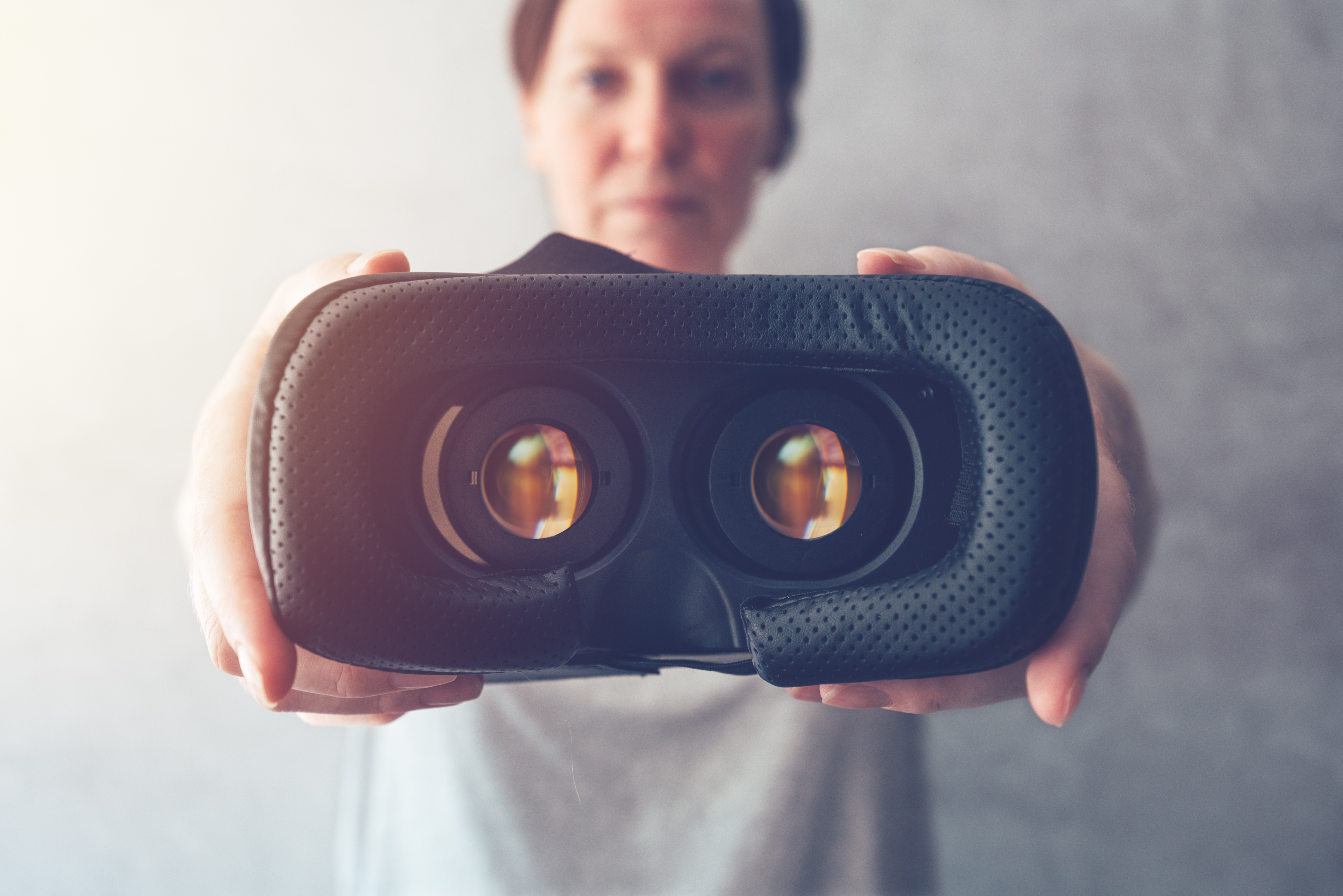
This is the magic word in the VR world. The Screen Door Effect is less than a technical way of describing the tiny grid you see in some VR headsets. The look has that of looking at a TV through a screen door, and if you can imagine that, you know that the effect is not really a pleasant one. Certain headsets have this worse than others but will compromise with far better graphics and performance, so finding the balance between the two of them is incredibly tricky, especially when you have nothing to go on but the words of others.
Tracking
Depending on the game you’re playing, you could find tracking to be either incredibly important or not a big deal, but the key is that you don’t want to buy a headset that limits the games you can play effectively. Tracking is done in a few different ways when it comes to VR. Some headsets use something called Inside Out Tracking. This means that the tracking of your controllers and body position is sensed through your headset, so moving around your controllers anywhere in the vicinity of your headset will usually result in incredibly accurate tracking mechanics.
Other headsets use towers to track you. These are portable devices that are set up around your play area to track not only your hands but your legs as well. These are more difficult to set up but generally offer a superior VR experience that has incredible tracking accuracy. The last way VR headsets can track is via a camera. This is done by placing a camera somewhere in the room you’re playing in and having it face you. The camera picks up the lights from the controllers and the headset to deliver the tracking of your movements. Keep in mind that stepping out of the camera’s view at any time will cause the headset to lose track immediately, and you’ll either need to step back in view quickly or reset the system.
Lense Type
This is perhaps the most important feature of any VR headset. The lens through which you view the virtual world is incredibly important and can determine everything from color quality to whether or not you’re getting a clearer image or not. Different headsets use different lenses, but it’s possible that multiple headsets will use the same ones for different headsets. The Fresnel lens is currently the state-of-the-art lense available, and it’s known to be the thinnest one out there currently, offering a sharp image and allowing glasses wearers to easily fit their glasses on while using their headsets.
Display
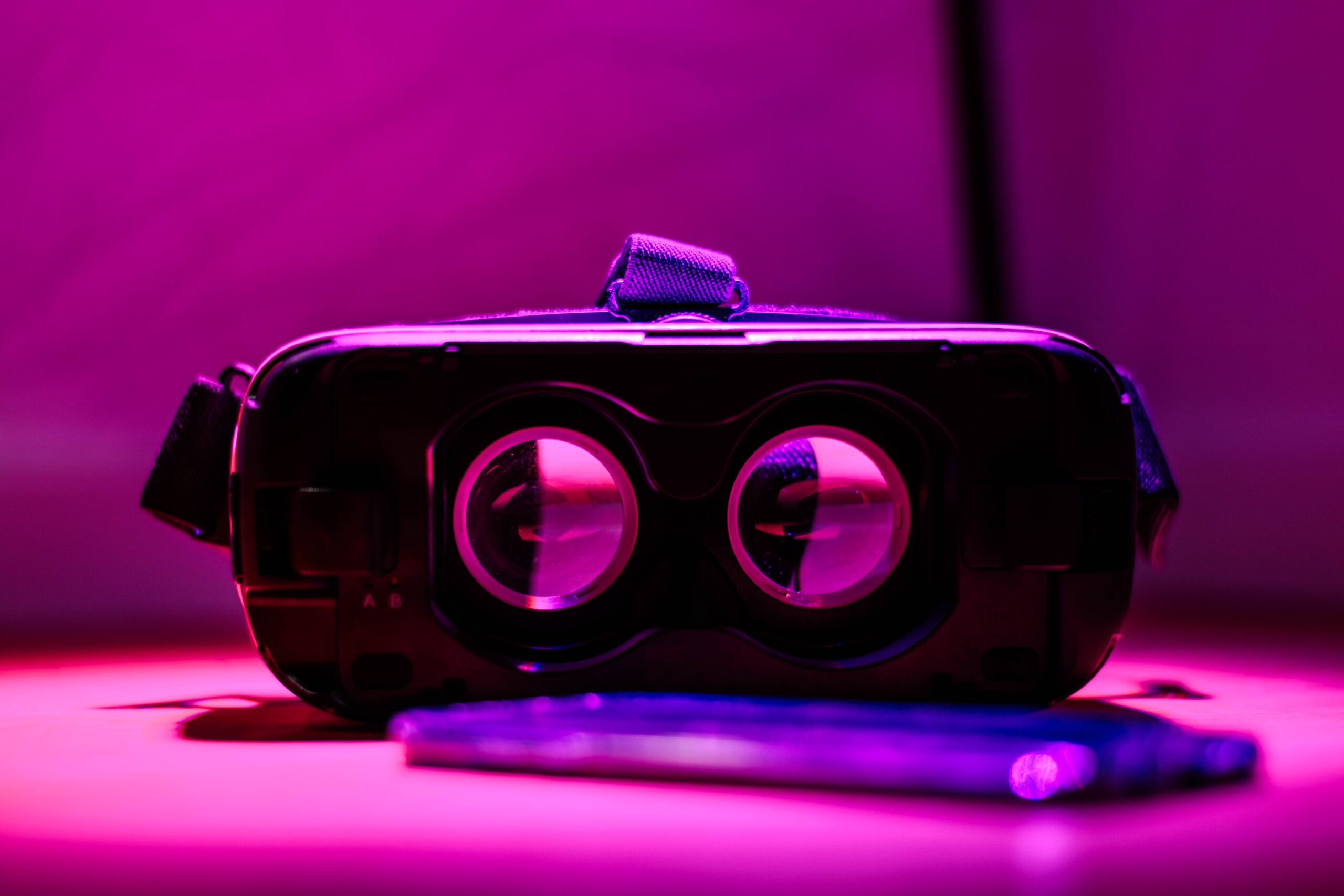
As important as the lens is, the display your headset has is right alongside it in terms of overall experience with VR. There are a few different display setups that VR headsets currently use, although more are being made by the day.
LCD Display
You’ve likely heard of LCD TVs before, and that’s the same technology that’s being utilized with an LCD VR display. The technology might seem pretty old, but it’s really only been utilized over the last 15 years or so. LCD screens are now the norm for both TV and computer screens, but dating all the way back to the 90s, LCD technology started getting utilized.
Their displays are so lightweight and easy to move around that it makes plenty of sense that they were the first kind of display utilized for VR. These displays have different kinds of sub-sects that determine what the visual you’re going to get looks like. Let’s explore what we’ve got option-wise.
TN Panels
Although they’re usually classified as LCD screens on the outside, they are generally of the TN Panel variety. TN Panels are known for having some incredible sharpness that allows for great images in not only flat-screen technology but in VR as well. They have incredibly high refresh rates and when it comes to VR displays, refresh rates are incredibly important. Having low-quality refresh rates in VR causes all kinds of issues, as slight delays in movements can do everything from making your eyes hurt to causing some long-lasting dizziness that’s kind of tough to shake off.
Although this makes for an ideal VR experience in terms of your performance, there are certain negatives to the TN Panels when it comes to using them. TN Panels have a tendency to be pretty weak in the color department. That means bright greens and pure blacks are often pretty weak, and that’s, unfortunately, the tradeoff you get with headsets using this type of display.
If you can deal with this, TN Panel LCD screens are an excellent choice that gives you 90 FPS at most times while delivering some super sharp images. Most headsets that use this type of technology tend to be on the cheaper side, too, so keep that in mind when searching for a headset.
OLED Display
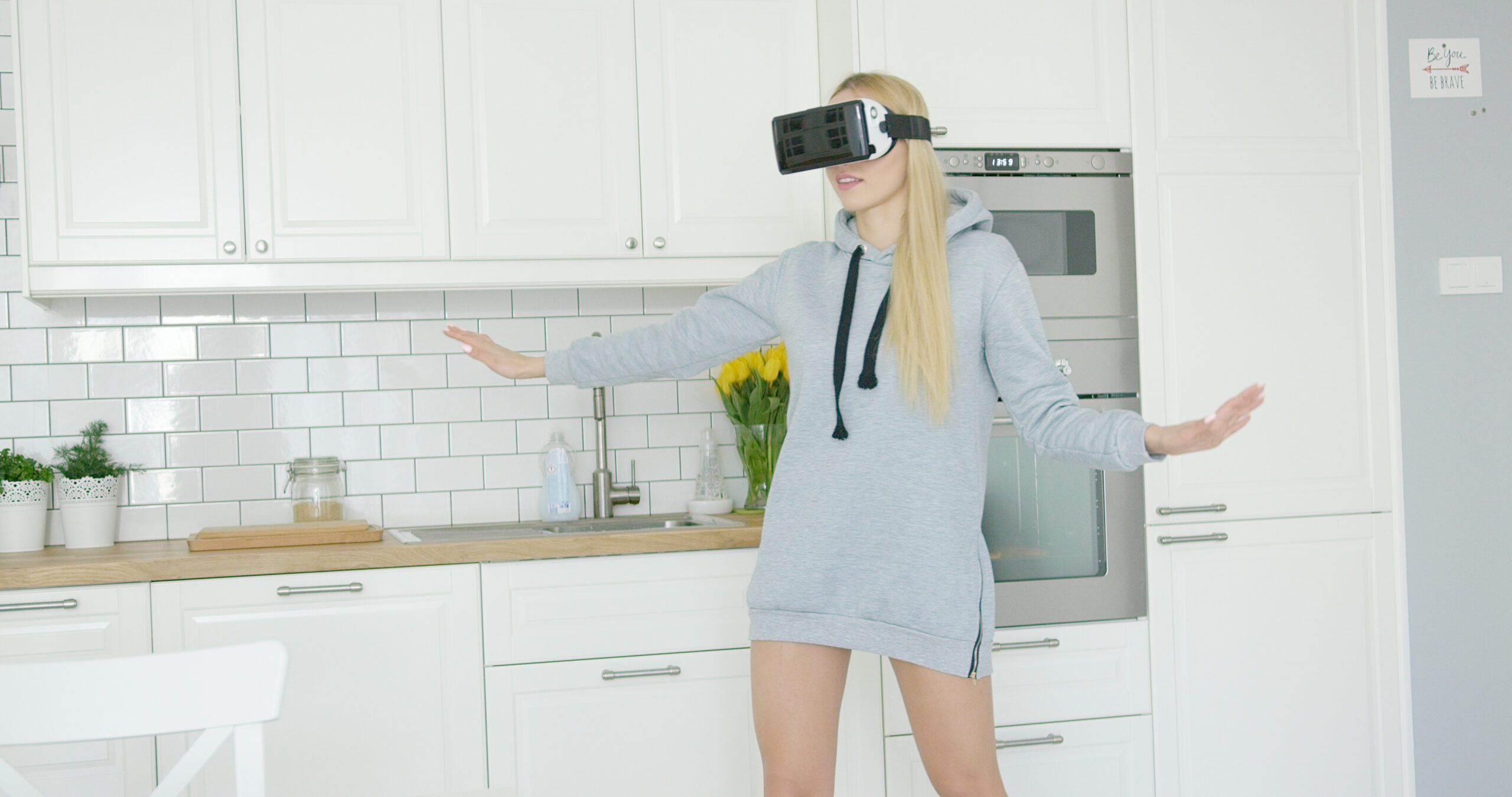
OLED displays are the new kids on the block and can be found in TV, computer, and VR headsets alike. Although on the surface they may seem similar, the insides of each work completely differently. OLED uses a material that emits light when electricity is passed through it, and because of that, the colors that it can produce are incredible looking.
LCD displays are unable to produce their own light, and that’s why they have weaker colors. OLED can create their own light, so they don’t have to worry about such things.
OLED screens in VR are incredible when it comes to visual quality as the colors pop like never before. For space games, having the ability to see a pure black color in the depths of space vs. the awkward light gray that comes with LCD screens is sometimes worth the tradeoff.
Of course, OLED is not perfect, and the tradeoff comes at the cost of clarity but lack of Screen Door Effect. OLED screens can tend to be less sharp than LCD screens. In addition to this, their refresh rate is sometimes not as fast, and this can lead to worse performance if you don’t have the PC to support it.
AMOLED
This might be a familiar technology for you if you have the newest phones on the market. These are incredibly thin displays that have an ultra-sharp resolution, and in VR, they are among the best you can possibly find. Basically a mix of the features of LCD and OLED, AMOLED screens have incredibly fast response times and also display awesome colors. They are the most popular screen to use currently in VR, and headsets from Vive and Oculus use this display with many of their headsets.
Keep in mind that this incredible visual experience often comes with higher-end headsets, and the price will reflect that. But you also want to make sure you aren’t compromising when getting VR, as getting a great performance mixed with a great visual experience is incredibly important.
Controllers
The controllers you have in VR are very important when it comes to how much enjoyment you get out of your headset. For each company, there are signature controllers that they will use, and while the headsets ultimately matter more, you want to know what kinds of controllers your headset is going to use before you get it.
Vive Controllers
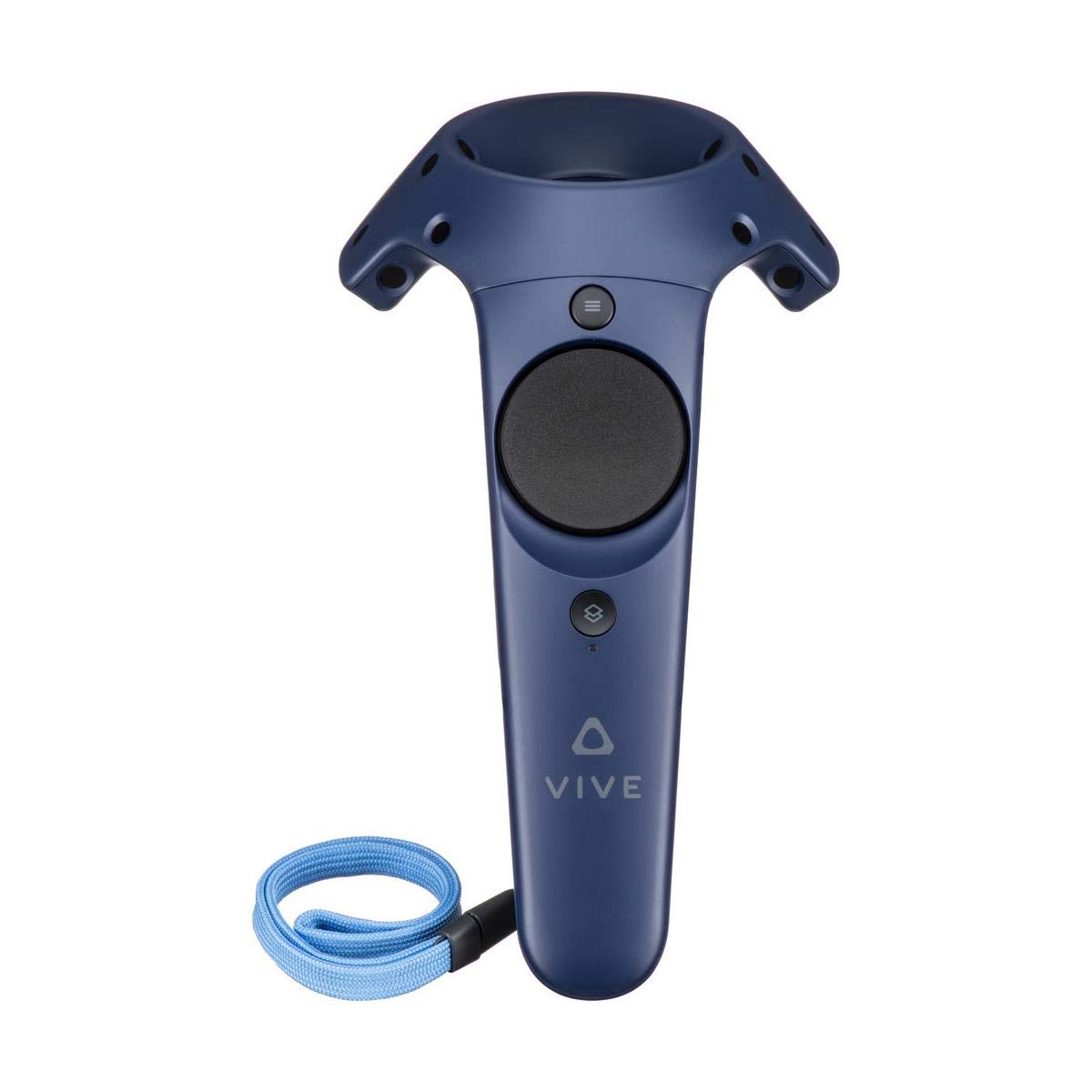
Early on in mainstream VR, HTC Vive was the granddaddy of headsets, and the controllers that came with it were the Vive controllers. These are ergonomically efficient, and they have a ton of different buttons to use on each controller. They also track incredibly well, but all these positives come with a huge negative, and that’s the complete lack of a joystick. There is a trackpad, but the lack of a joystick makes it tough to get around in most games as you don’t seem to have the pinpoint control needed. The tracking on the Vive controllers is as good as it gets in VR, though, and the accuracy is nearly perfect as the controllers are tracked via the various towers you have set up in your playspace. Overall, these controllers are decent, and the headset they’re attached to make it worth toughing them out.
PS Move Controllers
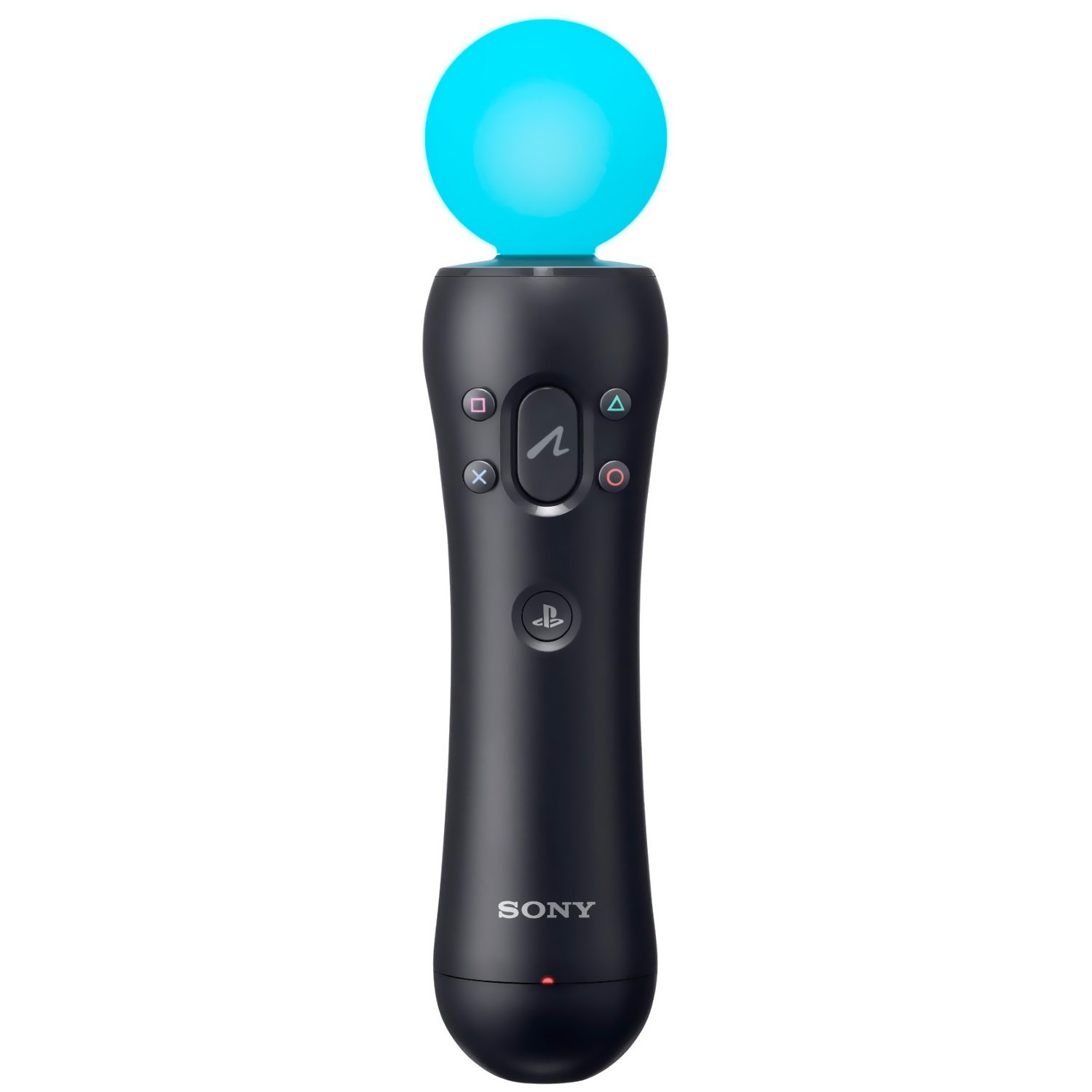
These go with the PSVR, and for some reason, Sony felt it best to use controllers that were 10 years old in their design and effectiveness. Despite this, the PS Move controllers are actually pretty effective in making it feel like you’re holding weapons in VR. Just like the HTC Vive controllers, though, you’re going to be without a joystick, and worse, you’re without a trackpad here, too, so all movement is done by the face buttons on the controllers, which makes it incredibly awkward to move and turn in games. These are the only controllers available in PSVR at the moment, and while they take some serious getting used to, you will eventually get the hang of it. The PS Moves take charge like a PS4 controller, and because of that, they tend to last longer than other controllers. The tracking is done via the PSVR camera, so you can’t be swinging your arms too wildly while playing as the PSVR camera can lose you pretty easily, and that will cause all kinds of problems in-game.
Windows Mixed Reality Controllers
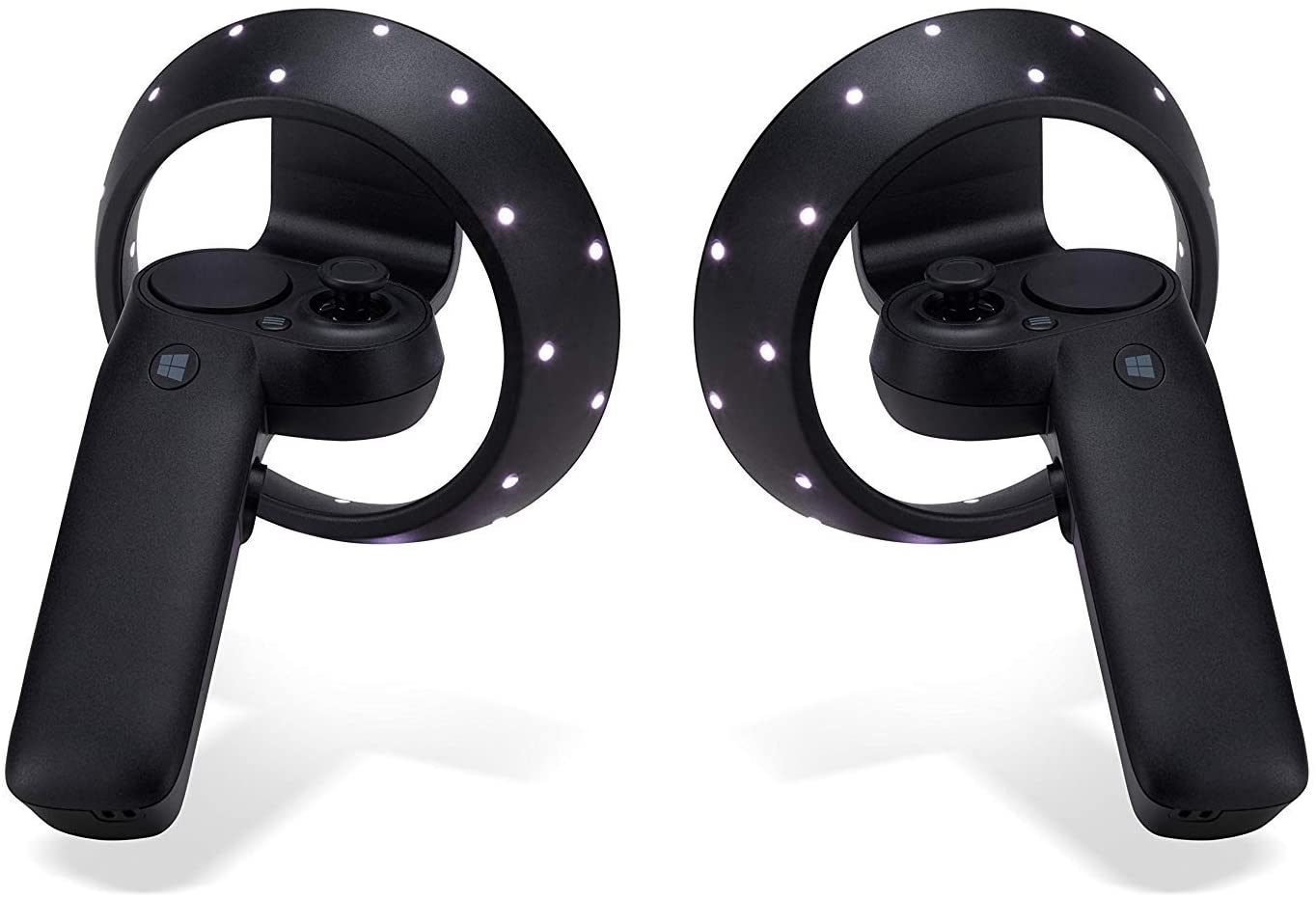
These are my current favorite controllers to use as there are multiple benefits to them vs. other controllers. First, let’s talk about tracking. These use inside-out tracking and are therefore tracked by the headset you have. This means you can move your arms all around, including behind your head and at your sides, without worrying that your arms will lose tracking. While most VR controllers are pretty small, these are sizeable and weighty without being uncomfortable. They are shaped perfectly for your hands, too, so they don’t feel uncomfortable after long play sessions. The Windows Mixed Reality controllers also have a joystick, so getting around and turning on the controllers is incredibly easy, and it’s as natural as moving around on a PS4 or Xbox controller.
With every controller comes some caveats, though, and here it’s the somewhat weak battery life. This can be countered pretty easily with rechargeable batteries, though these might cost a bit. Battery supply is something that Windows Mixed Reality will require in some form, so keep that in mind when delving into this form of VR.
The controller is all heftier than most, so depending on your hand strength and hand size, this could either be good for you or not so good. It’s all about preference with controllers sometimes, so you need to feel it out to know what works for you.
Oculus Touch
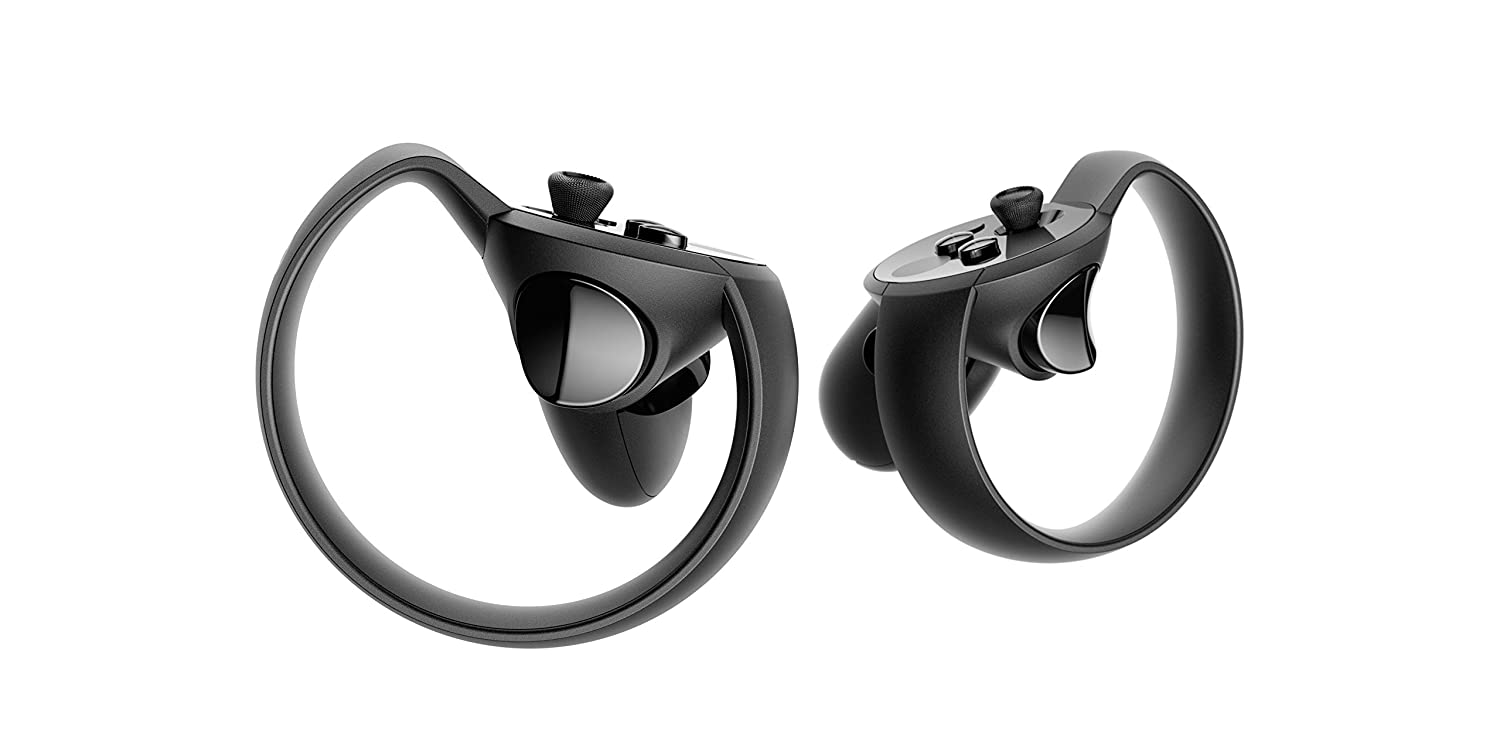
The Oculus Quest is one of the best headsets on the market, and its lightweight is one of the biggest features, so naturally, the controllers would follow suit, and the Oculus Touch is one of the smallest VR controllers out there. This controller fits perfectly in your hand and is easy to hold for long sessions.
Not only is it comfortable, but the battery life on this baby is incredible, and I’ve found myself only needing one battery for each controller for weeks on end. The battery life is phenomenal, but the tracking might be even better. Just like the Windows Mixed Reality controllers, the Oculus Touch uses inside-out tracking, and the result is incredibly accurate and wireless gameplay. For the beginners of VR, these are probably the best controllers out there, and the haptic feedback they have makes every action you do in VR have some real weight to it, whether it’s firing guns or clashing with swords.
Valve Index Knuckles
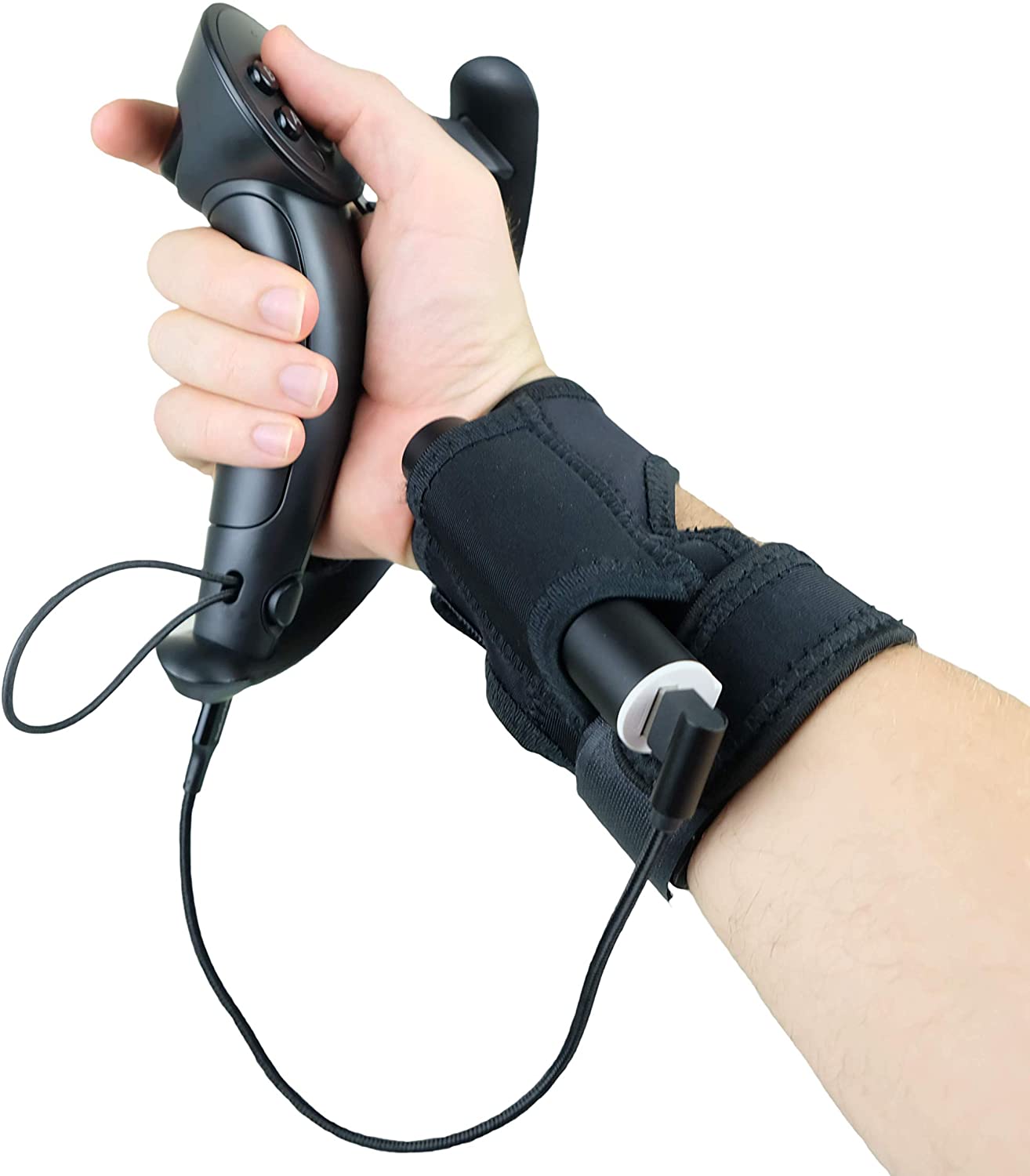
When the Valve Index was released, it was hyped beyond belief, and despite the outlandish price, it lived up to it pretty well, and that’s in big part because of the Valve Index Knuckles. These controllers have an awesome design, great haptic feedback, and most importantly, the most comfortable fit in all of VR. These controllers slide on like a glove, and the sleek body of the controller allows for long sessions as your grip doesn’t have to be that tight to hold them. This is partially because it’s one of the only controllers that comes with a hand strap off the bat. That means you really don’t have to be gripping anything at all until you need to in your games. The result is a far more relaxed experience for your hands during your playthrough and feels like a bit more of a realistic one as well.
You can charge these controllers at a port that you can buy separately, and they have a pretty great battery life, so expect to get some lengthy play sessions out of these.
While the charge life is awesome, the coolest feature of the Valve Index Knuckles is the ability to use finger tracking. This unique feature actually tracks your entire hands in virtual reality. Some games support this, and just seeing your hands in VR is an incredible experience.
Oculus Rift Controller
The Oculus Rift controllers are very similar to the Oculus Touch controllers, with the biggest difference being the size of them. The general setup is pretty similar, but the biggest difference is the way the ring is positioned; it’s in a reverse angle, and this changes the way the weight is positioned during your play sessions.
In a way, these fit better into your hands than the Oculus Touch controllers, and that will allow for longer play sessions because of it. The tracking in these controllers is done through inside-out tracking, so your controllers can move all over the place, and your headset will pick it up no matter where they are.
These controllers also feature the same finger tracking ability that Valve Index Knuckles have. Oculus games have a lot of games that support not only finger tracking but also full-body tracking, and this puts you completely into the game. These are some of the best controllers in the VR world, and the buttons and joystick make it a very easy-going and comfortable experience.
Which Headset Should I Get?
It’s time to choose which VR headset is going to take you into the virtual world for the first time. I’m going to give you three options that are most popular currently and that utilize the best of the features we’ve discussed above. The costs of these headsets will vary depending on what vendor you get them from.
Oculus Quest 2
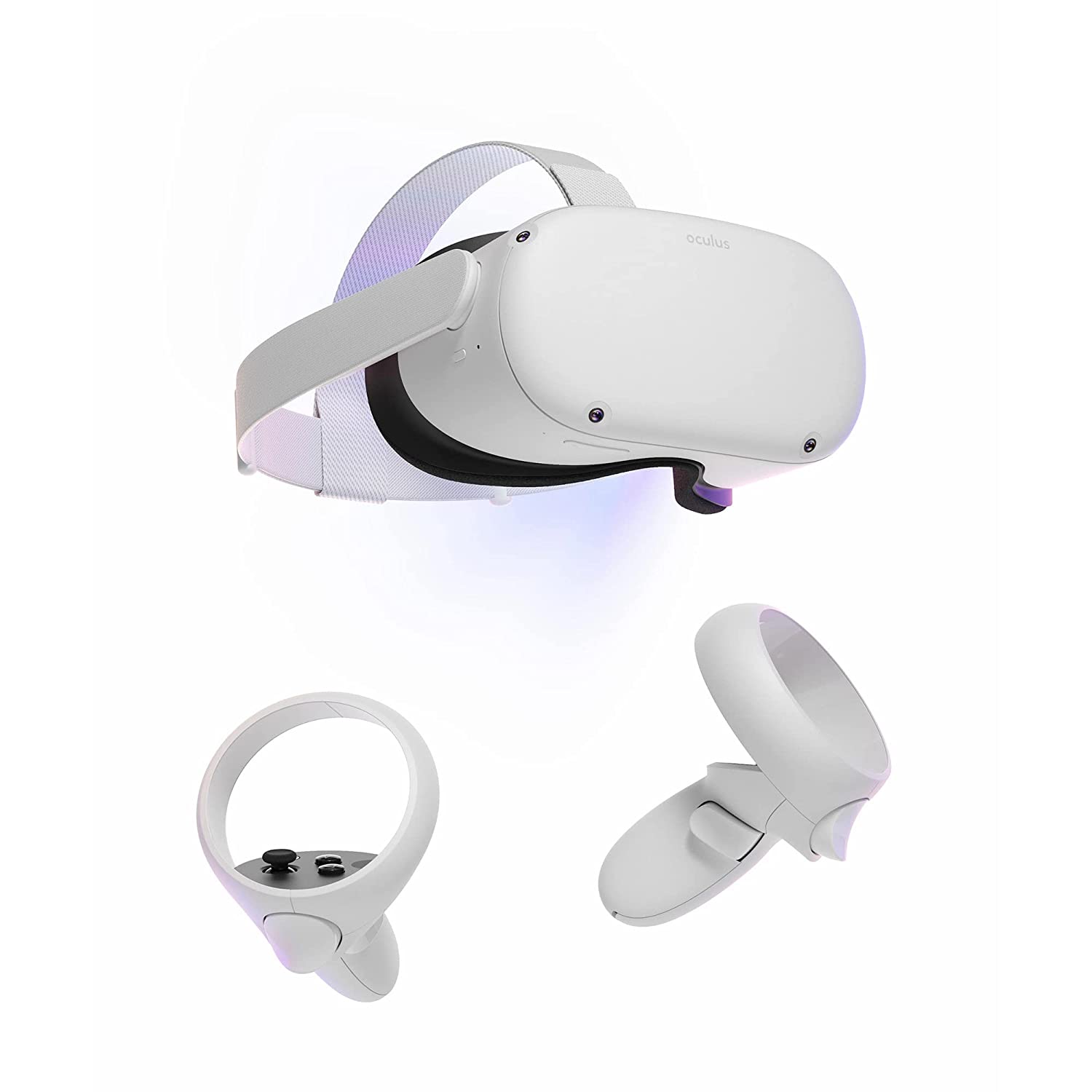
If you’re just starting out in VR, I can confidently say there is no risk in getting the Oculus Quest 2. It’s an excellent headset with incredible resolution and a sizeable library that gives you access to tons of different kinds of games. You’ve also got a completely wireless experience for the first time in VR. That means no worries about tangled wires, and the only maintenance you need to worry about is charging your headset after sessions. The battery life on the controllers is also outstanding, so you can put your worries about having constant batteries on hand here. You also have the ability to hook up your Oculus Quest 2 to your computer, and this turns it into a full-fledged PCVR headset. Not only do you get an almost infinite supply of games via Steam or Oculus stores, but you also get upgraded graphics when connecting to your PC as well. You can connect with either an Oculus Link or you can use a program such as Virtual Desktop to connect wirelessly and get the best of both worlds.
The price for the Oculus Quest 2 varies from $300-$500 depending on where you get it from and whether you get the 128 GB version or the larger ones. In my experience, 128 GB is plenty and if you ever run out of space, just delete games you aren’t playing. Downloading doesn’t take much time at all, so you won’t need to wait too long to play your new games.
Windows Mixed Reality Headsets/ HP Reverb G2 or Samsung Odyssey Plus
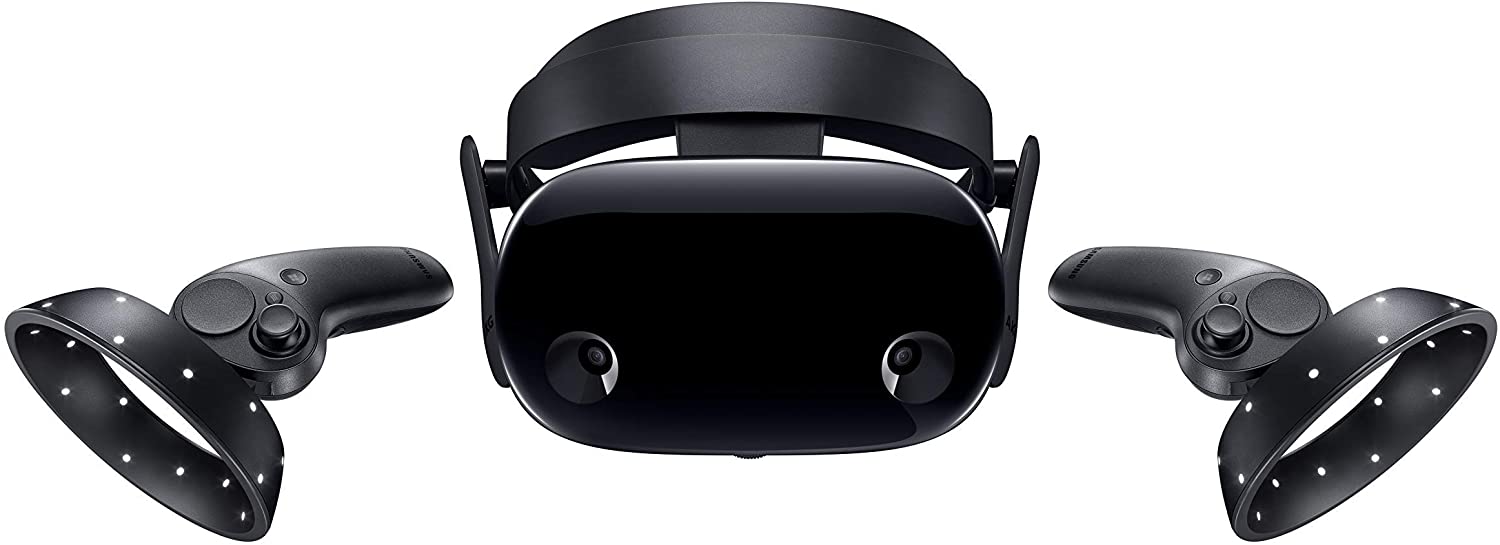
I’m putting these two together because they’re very close to each other in terms of quality. For the people that want the new shiny product, the HP Reverb G2 is absolutely the way to go. It’s got some incredibly sharp graphics and is one of the more comfortable headsets around. The display is amazing, and the tracking it provides with the controllers is fantastic as well. You will get some awesome graphics here, but the most notable part is, without a doubt, the complete disappearance of the Screen Door Effect. For perhaps the first time in VR, you will see a crystal clear image with almost no Screen Door Effect. If you stare carefully, you might catch a glimpse of it, but I’m betting after a minute with this headset on, you’ll seldom be able to notice it. This headset uses an LCD screen, so while you’re getting the ultimate in clarity, you’re going to be sacrificing colors here just a bit.
The Samsung Odyssey Plus is older and therefore a bit cheaper, but the product is arguably equal to the HP Reverb in every way. The star of the show here is the OLED screen that it boasts, and having tried both, the Samsung Odyssey Plus has vastly superior colors, and it’s especially noticeable in games with nighttime scenarios or space involved. The resolution may not be quite as sharp as the HP Reverb 2, but the image is still more pleasing to the eye. The tracking is a little iffy at times, but generally, the playing experience is a smooth one. The tough thing is finding this headset as it’s become more and more popular since its release.
Both the HP Reverb G2 and Samsung Odyssey Plus are great headsets, so you just need to figure out if you value visual clarity over incredible color. Sadly, just can’t have both in VR just yet. The prices for each vary from $400 to $700 depending on where you get them, so make sure you find the best site when making your choice here.
Valve Index
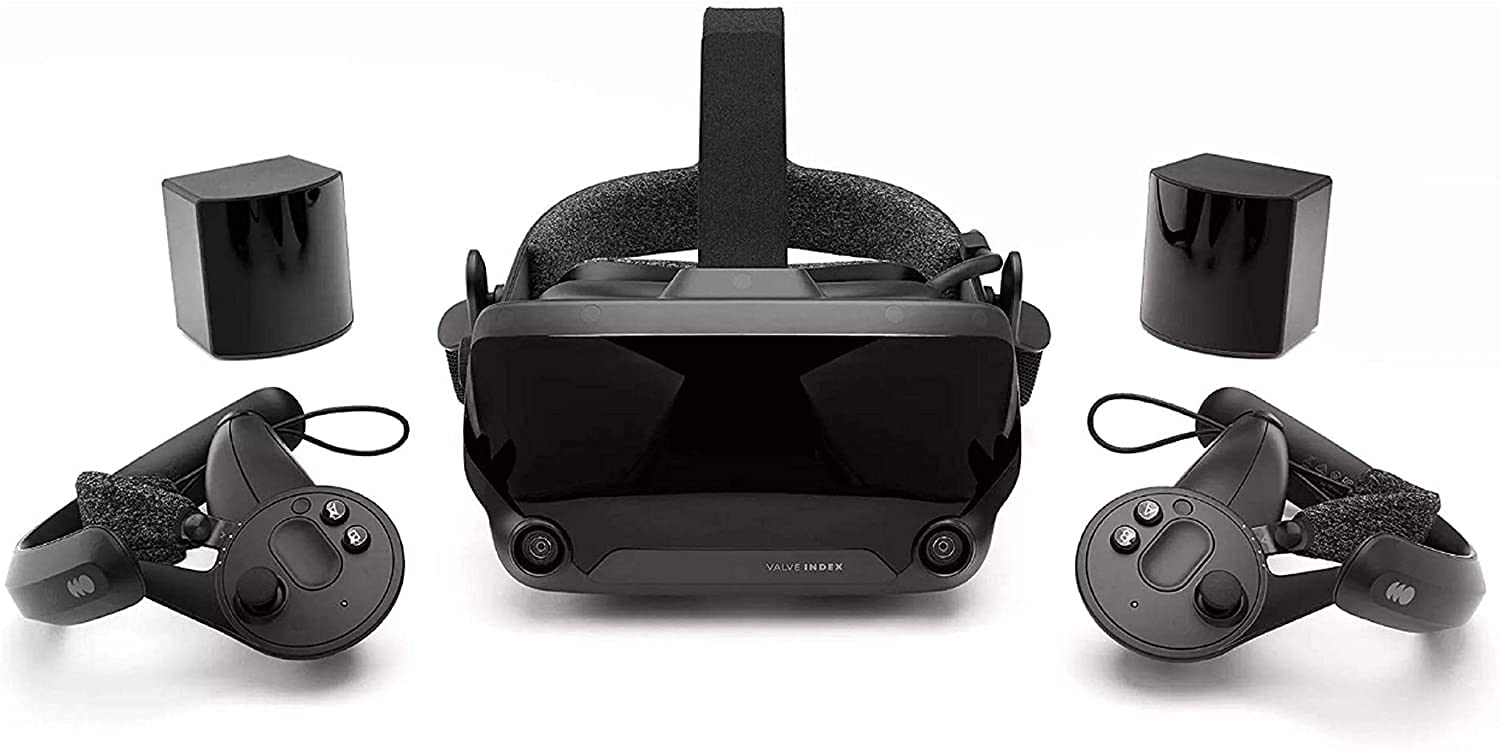
If you’re ready to shell out for your VR, Valve Index is as good as any spot to put it. This is a top-of-the-line headset that is so damn confident in the product it provides that it comes with Half-Life: Alyx, one of the best VR games ever for free. That’s not to say you’re getting a steal here as this headset is still a pretty penny at $1000, but I think you’ll find it to be worth it.
Valve Index has maybe the best resolution and controllers in all of VR. The screen is LCD, but there is no smoother image out there, and if you can get over the somewhat washed-out colors on display, you’ll be whisked away into the clearest form of VR to ever exist. The field of view is great, too, and among the best, that can be found in VR.
The controllers are the best thing about this headset. The Valve Index knuckles are some of the most comfortable and effective controllers in all of VR. They are incredibly comfortable, and they come with hand straps, so you don’t have to worry about holding them constantly for hours at a time. The tracking is also incredible, so you can play any game you want without having to worry about losing tracking midway through the game.
Headset With The Best Games
While most of the VR headsets out there are pretty much integrated with Steam from the get-go, if you don’t want to get an additional service on your computer for whatever reason, you can always just play the exclusive games for your headset.
Oculus
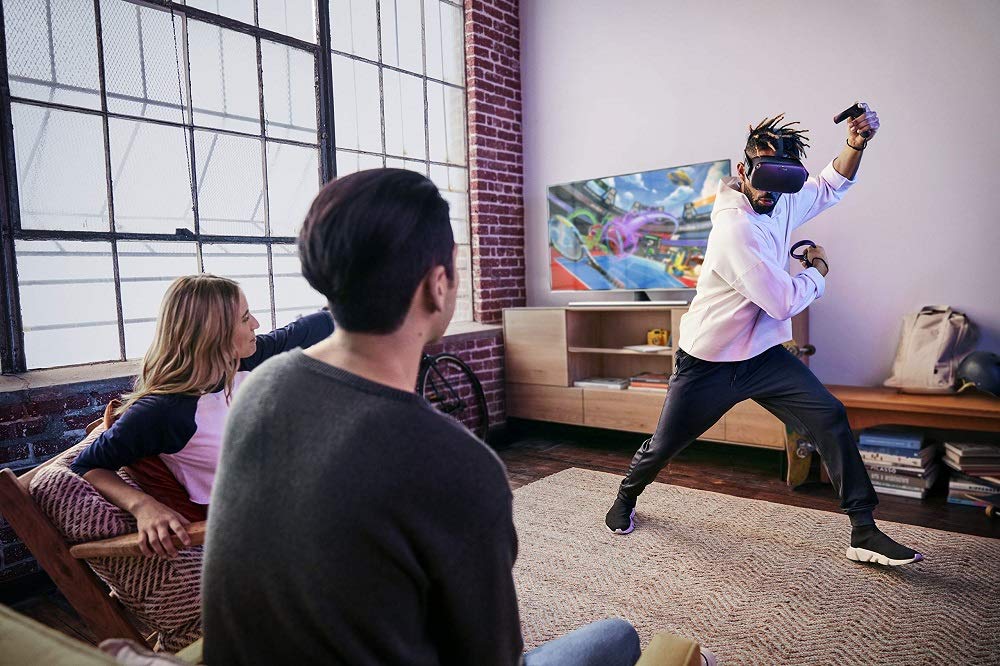
Oculus has an awesome selection of games that are specific to Oculus headsets, and while they have most of the VR games out there, their exclusive games like Defector and Asgard’s Wrath are absolutely awesome and makes selecting an Oculus headset a pretty easy decision. These games may eventually get ported to other headsets as well, but currently, Oculus exclusives are located in the Oculus store and nowhere else. The Oculus Quest and Oculus Quest 2 can access the Oculus store as well, so you’ll have the entire Oculus Quest library on top of the Oculus exclusives, and the result is an awesome amount of great titles to choose from.
HTC Vive
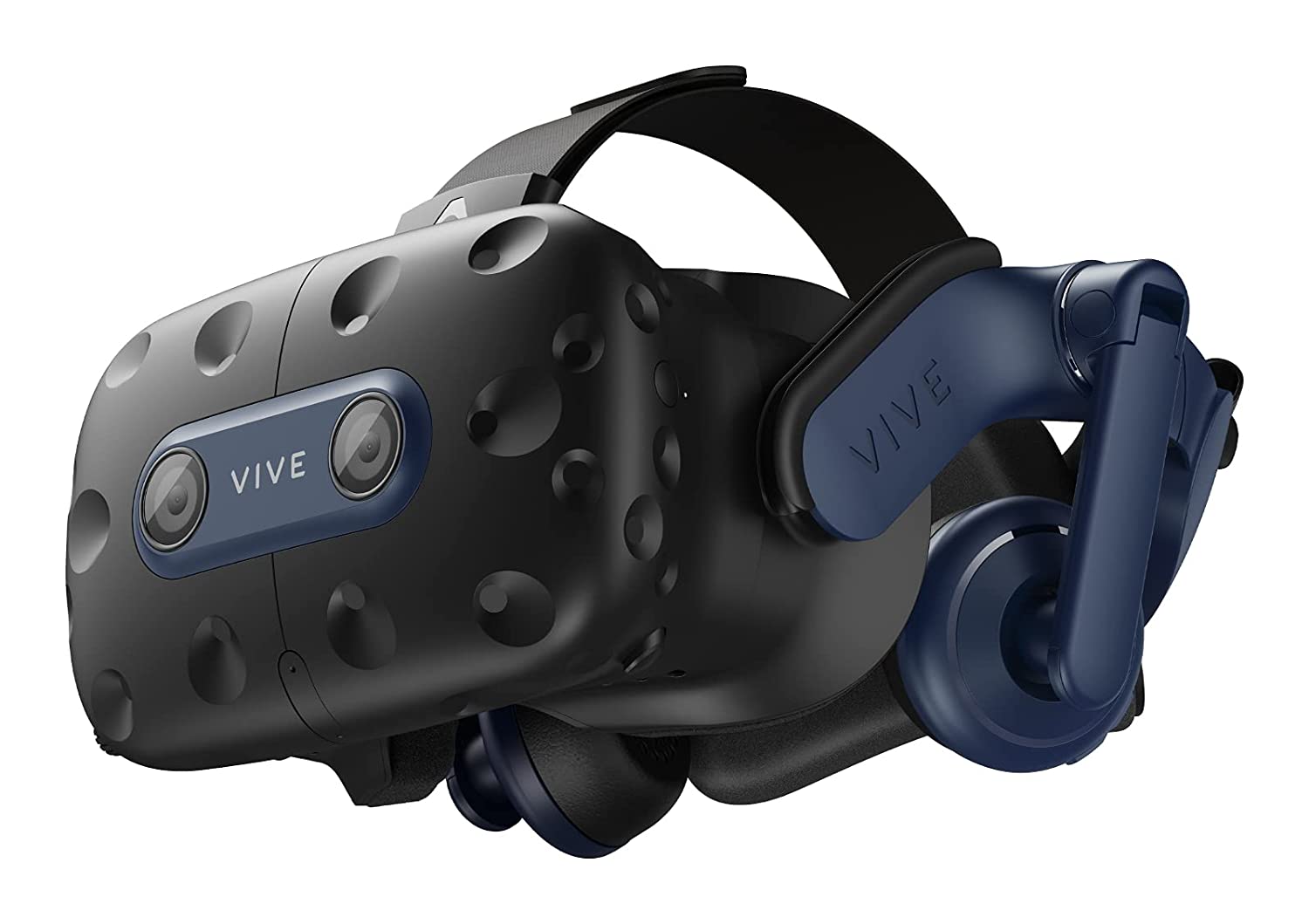
HTC Vive had its own games to start off, but since most of the games considered exclusive to HTC Vive are now available on every headset out there. The advantage HTV Vive had is that its room-scale experience was unmatched and allowed you to create a huge space to play in where other headsets were completely rooted to a small amount of space. That’s not the case anymore, as tons of different headsets have room-scale abilities now, so there really is no need to get HTV Vive strictly for their games. If you’re going to get these kinds of headsets, make sure you get it because you love the games on it and nothing else.
Windows Mixed Reality
There are no exclusive games on Windows Mixed Reality, but you need to keep in mind that not all games are always ready to play with Windows Mixed Reality. They are compatible, but the controls often need to be reconfigured in order to make the controllers work properly with some games. The reason behind this is that developers just were not that familiar with Windows Mixed Reality when first creating their games. The majority just had controls set for Oculus and HTC Vive products. While most games are catching on to how many people are playing Windows Mixed Reality, many indie games are still without proper controls for this headset, so you’ll either need to input your own control scheme or hope that someone in the Steam Community put in their own controls that you can just upload.
FAQ
Question: Which is the Cheapest VR Headset you can Buy?
Answer: There are headsets that are only in the low $100s, but these are generally headsets that work strictly for your mobile phones, so these are not going to be considered here. When it comes to real VR gaming, the cheapest headset you can find is probably the Oculus Quest 2. You can generally find this headset for around $300 and lower if you find it used, and there is no better bang for your buck in VR.
Question: Can you Play Against Friends who Have Different VR Headsets?
Answer: This heavily depends on the game you’re playing. Plenty of multiplayer games in the VR world have crossplay supported, but some are specific per headset, so you need to check on the game pages before you purchase to make sure it’s supported.
Question: Which is the Easiest VR Headset to Set up?
Answer: The Oculus Quest 2 has the easiest setup of all headsets. As long as it is charged, you just throw it on, and you’re gonna be good to go. There is a quick room setup, and from there, you’re free to play demos or games.
Conclusion
There is a lot to know when thinking about when getting your VR headset, but hopefully, this guide has shown you what to look for and helped you narrow down your choices. Regardless of the headset you choose, you’ll be able to have a great time with any of the headsets above.
Continue reading more about VR gaming gear:
